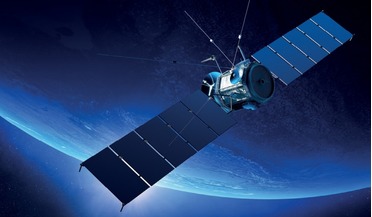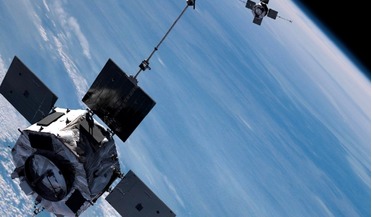 October 2017
Saving geostationary orbit
October 2017
Saving geostationary orbit
... geostationary (geosynchronous equatorial orbit) satellite, Syncom 3, was not launched until 1964, but this prime orbital ...problem is worse than we thought. Recent observations of the GEO orbit region by the US Joint Space Operations Center (ComSpOC) ...
 April 2017
Urgent action needed to keep satellites safe in orbit
April 2017
Urgent action needed to keep satellites safe in orbit
...issues and hazards that are part of operating in the GEO orbit? The year 1963 saw the dawn of the commercial satellite... about 29 cm in size assuming an albedo of 8%, in the geostationary ring [10]. This figure does not include high area-to-mass (HAMR)...
 October 2019
Electric orbit raising and space weather
October 2019
Electric orbit raising and space weather
...The colour coding indicates the number of days after launch. Geostationary orbit (GEO) is indicated by a white dashed line. Electric orbit raising Satellites in geostationary orbit (GEO) are fixed at an altitude of around 36,000 km, but even they are...
 October 2019
Reusability is key to expanding future space launch business
October 2019
Reusability is key to expanding future space launch business
...at four key segments in the commercial market: geostationary orbit (GEO), non-geostationary, low Earth orbit (LEO) constellations and other non-GEO constellations. The traditional geostationary satellite marketplace is somewhat under siege these days...
 November 2021
Space insurance and the future of risk management
November 2021
Space insurance and the future of risk management
... lifetime, which is typically up to 15 years for a communications satellite based in geostationary orbit (GEO) and usually 10 years or less for a spacecraft in low Earth orbit (LEO). No one would be surprised to learn that the launch phase represents...
 February 2019
The Space Elevator – an alternative path to space?
February 2019
The Space Elevator – an alternative path to space?
... around a rotating celestial body or a Lagrange point. Geosynchronous equatorial or geostationary orbit (GEO), offers such an equilibrium for Earth. A body such as a TV satellite in GEO remains above the same point on the ground as Earth rotates. The...